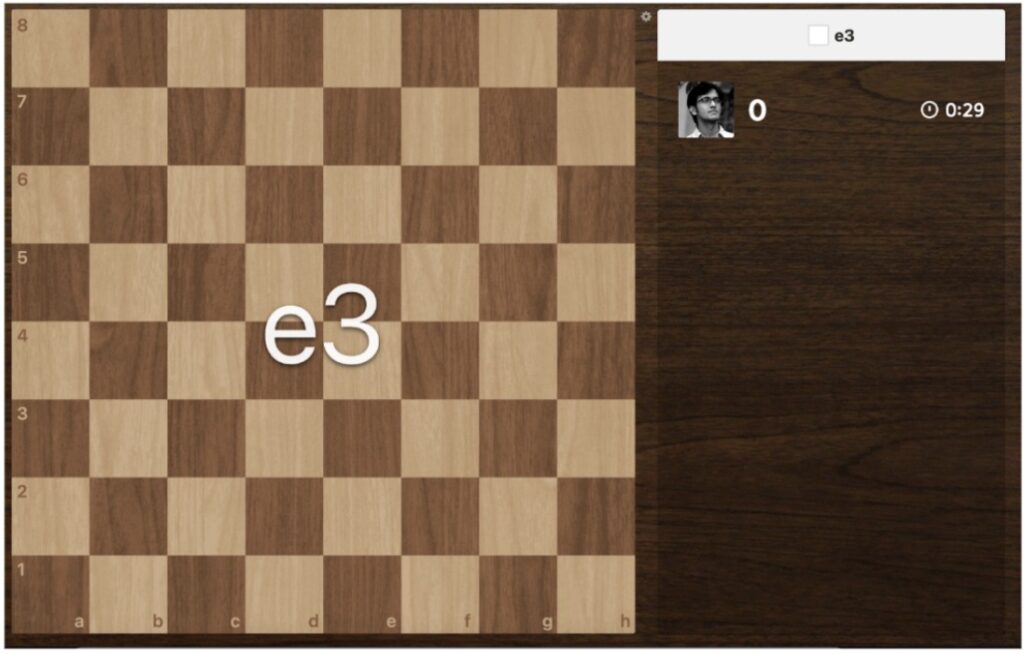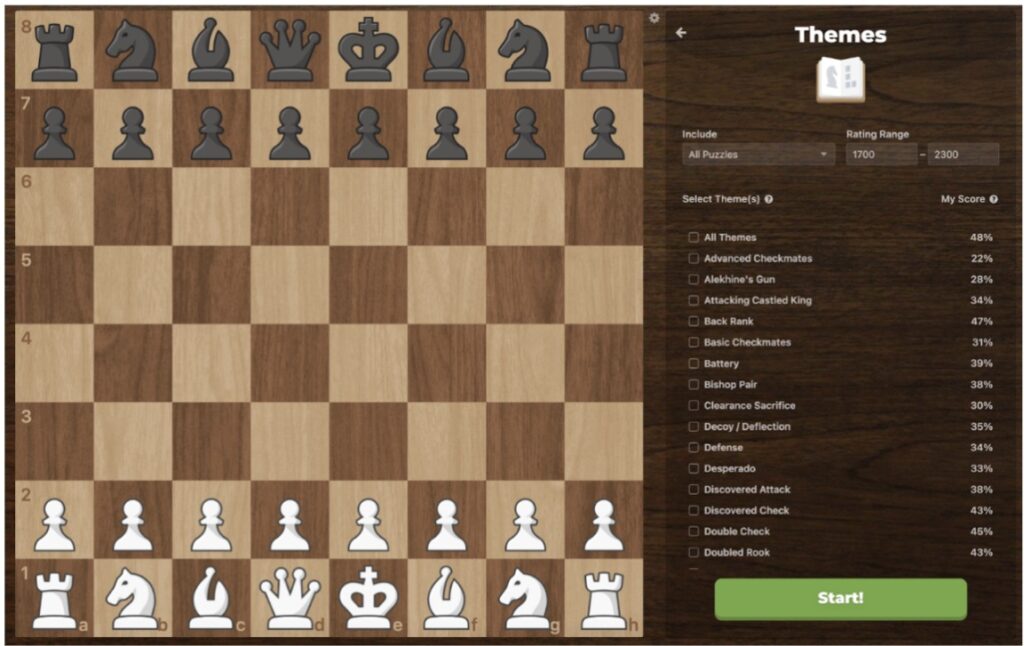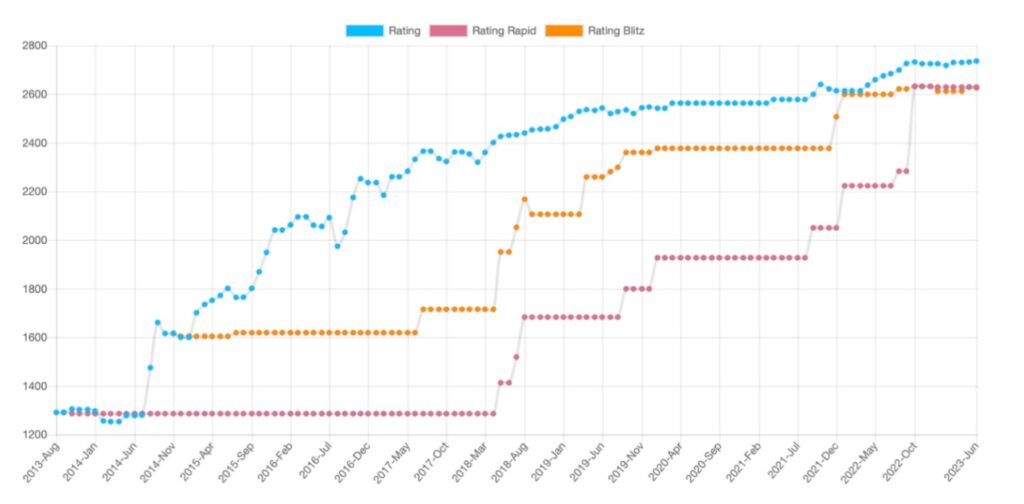Blogs
How to understand your child’s chess progress?
By:
Sreeraman Thiagarajan
June 19, 2023
The world of chess is a captivating realm for children, igniting their enthusiasm as they swiftly grasp the game and delight in playing it. Yet, many parents find themselves puzzled, seeking clarity on their child’s progress in chess.
Whether you possess a basic understanding or are entirely new to the game, rest assured that you can actively participate in supporting your child’s growth. Before embarking on this exciting journey together, let’s explore what progress in chess truly entails. By doing so, you’ll be equipped with valuable insights to keep track of your child’s development. Here are a few ways to nurture their chess journey:
1. Assessing Fundamental Knowledge: Building a Solid Chess Foundation
When it comes to mastering any field, including chess, a strong foundation is key. Whether your child is new to chess or has completed a foundational course, it’s important to check for their understanding of essential concepts. These fundamental elements serve as building blocks for their chess journey. Ensure that your child has a solid grasp of the following elementary terms:
- Square names and colors: Chess is played on a grid of 64 squares, and each square has a unique name and color. Your child should be familiar with the names of the squares (such as e4, c7, etc.) and the alternating colors of the board.
You can use Chess.com’s Vision Trainer to help your child improve with square names, coordinates and moves.


- Piece movements: Understanding how each chess piece moves is fundamental. Your child should be well-versed in the movements of the king, queen, rooks, bishops, knights, and pawns. This knowledge forms the basis for effective piece coordination and maneuvering.
- Special moves: Chess has a few special moves that add depth and complexity to the game. Ensure that your child is aware of these moves, such as castling (a king’s move with the rook), en passant capture (a pawn capturing an opponent’s pawn in a specific scenario), and pawn promotion (when a pawn reaches the opposite end of the board and can be exchanged for a more powerful piece).
- Tactical concepts: Introduce your child to fundamental tactical concepts like forks and skewers. A fork occurs when a single piece attacks two or more opponent’s pieces simultaneously, while a skewer involves attacking a more valuable piece, forcing a less valuable piece to move, and revealing it to capture.
By checking your child’s knowledge of these foundational elements, you ensure that they have a solid understanding of the basic mechanics and strategic components of the game. This knowledge serves as a sturdy platform upon which they can build their chess skills and embark on a journey of continuous improvement.
2. Assessing Strategic Thinking: Unveiling the Chess Mastermind Within
Chess, a game with a rich history spanning thousands of years, has witnessed the evolution of strategies while maintaining a core set of fundamental principles. To gauge your child’s progress in chess, it is crucial to evaluate their capability in strategic thinking. These strategic elements form the backbone of successful gameplay and include:
- Controlling the center: Throughout history, it has been widely recognized that controlling the central squares (e4, e5, d4, d5) of the chessboard provides a significant advantage. Evaluate your child’s understanding of this principle and their ability to prioritize central control in their games.
- Material advantage: Chess is a game of limited resources, and gaining a material advantage by capturing more valuable pieces can tilt the balance in your favor. Assess your child’s capability to identify and capitalize on opportunities to capture opponent’s pieces, thereby securing a material advantage.
- Positional advantage: Beyond material considerations, positional advantages, such as piece coordination, pawn structure, and king safety, play a crucial role in chess strategy. Encourage your child to analyze their games and determine if they are successfully positioning their pieces for optimal control and influence over the board.
- Tactical sacrifices: Sometimes, sacrificing material can lead to significant gains in position or a decisive attack. Evaluate your child’s ability to recognize key sacrifices and calculate the potential benefits. Understanding when and how to make sacrifices is a hallmark of strategic thinking.
After each game, engage your child in a discussion about their strategy versus their opponent’s strategy. Ask them to articulate their thought process, explain their strategic choices, and reflect on the effectiveness of their decisions. This analysis will help them refine their strategic thinking skills and develop a deeper understanding of the game.
By assessing your child’s strategic thinking capabilities, you gain insights into their ability to formulate and execute plans, adapt to different game situations, and make strategic decisions that align with their overall objectives. Encouraging their strategic development will pave the way for them to become formidable chess players capable of outmaneuvering their opponents on the grand chessboard.
3. Assessing Tactical Acumen: Unlocking the Chess Puzzle Acumen
In the intricate realm of chess, tactical acumen plays a pivotal role in achieving victory. Recognizing patterns and exploiting positional weaknesses through tactical combinations can turn the tides of a game. To evaluate your child’s progress in this vital aspect, focus on their tactical prowess and provide opportunities for improvement.
- The Power of Tactics: Chess is replete with positions that offer tactical possibilities. Encourage your child to grasp the essence of tactics, which involve finding combinations of moves that yield material advantage, positional advantage, or even lead to a decisive checkmate. This skill enables them to seize opportunities and outmaneuver opponents.
- Solving Chess Puzzles: An effective way to enhance tactical acumen is through puzzle-solving. Puzzles come in various themes, such as “Mate in 1,” “Mate in 2,” “Battery,” “Backrank,” “Pins & Forks,” “Discovered Attacks,” and more. Regularly expose your child to puzzles of varying difficulty levels, stimulating their pattern recognition and tactical calculation abilities.
- Tracking Progress: As your child engages with puzzles, evaluate their performance and progress. Monitor their ability to identify key tactics, calculate variations accurately, and visualize potential moves and resulting positions. Assess their speed, accuracy, and creativity in solving puzzles. Tracking their improvement over time provides insights into their growing tactical skills.
- At Chessniti, our home assignments include solving puzzles related to their learning level & playing strength. Students can also use Chess.com’s puzzle section for further improving their tactical acumen.


By honing their tactical acumen, your child gains the ability to navigate complex positions, exploit opponents’ weaknesses, and unleash devastating combinations. This skillset adds depth and excitement to their chess repertoire, making them a formidable opponent.
Encourage regular puzzle-solving sessions, integrating them into their chess practice routine. Celebrate their successes, provide guidance when they encounter challenges, and inspire a love for exploring tactical possibilities. With each solved puzzle, your child’s tactical arsenal expands, transforming them into a strategic virtuoso on the chessboard.
4. Exploring Checkmate Mastery: Unlocking the Key to Victory
In the realm of chess, checkmate stands as the ultimate objective, signifying the helplessness of the opponent’s king. The term itself originates from Persia, where “Shah Mat” translates to “the king is helpless.” Checkmate occurs when the opponent’s king finds itself with no legal square to escape. This accomplishment can be achieved through various combinations, utilizing different pieces such as the queen, rooks, bishops, and even pawns!
Familiarizing your child with the diverse checkmate patterns and styles is a crucial step toward winning more games. Here’s a list of 36 types of checkmates with illustrations they can refer and learn from.
To aid your child’s journey, open the guide in front of you and quiz them on each checkmate pattern. Encourage them to explain the significance of each mate and its unique characteristics. By engaging in this interactive process, you foster their comprehension and retention of these essential checkmate techniques.
Remember, mastery of checkmate patterns is an ongoing process. Encourage your child to regularly revisit the guide, practice solving checkmate puzzles, and incorporate their newfound knowledge into their games.
5. Measuring Game accuracy and rating progress: Creating a feedback loop for progressive learning
Tracking game accuracy and rating progress (Elo rating) is an essential part of assessing your child’s development in chess. Here are some methods to measure their game accuracy and rating progress.
- Online platforms like chess.com allow players to analyze their entire game step by step while pointing out inaccuracies, blunders, good and excellent moves.

- Furthermore, softwares like Chessbase allows players to create a database of their entire playing history and provide insights and suggestions. One can also consider using open source chess engine like Stockfish to analyze and improve moves.
- Seek Guidance from a Chessniti Coach: Our coaches are always available to provide valuable feedback and guidance for your child’s progress. Our coaches can review games, offer strategic advice, and identify areas of improvement. They can help your child understand the significance of accurate moves, develop better positional understanding, and enhance their overall gameplay.
- Keep track of rating progress: The official performance rating is provided by FIDE, the apex body of chess. We will cover this separately on how to get a FIDE rating in another blog but for very beginners, they can consider the rating given by chess.com or lichess.org as a starting point. Very new players may start with a Elo rating of 300 while grandmasters hover around 3000 points.
Most intermediate players have an Elo rating of around 1200 to 1600 points on online platforms. As a parent you can keep track of the rating, the velocity at which it is growing. If you find your child to be stuck in a particular rating range for several months, it may be time to schedule a session with their coach for an assessment.

D. Gukesh, the Indian chess prodigy who’s aged 17 years now has shown consistent improvement over the past ten years in his performance rating, which started at 1200 points when he was 7 years old in 2013.
Remember, progress in chess is a gradual process, and it’s essential to focus on continuous improvement rather than just the outcome of individual games. Encourage your child to embrace both victories and setbacks as learning opportunities, fostering a growth mindset.
As a parent, your role in monitoring your child’s chess progress goes beyond simply focusing on winning. It is about actively engaging, providing support, and fostering a mindset of continuous learning.
Do you still need help? Write to Sreeraman at dragonb@chessniti.com
